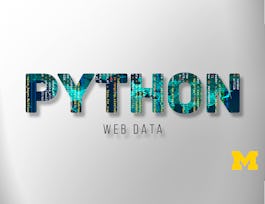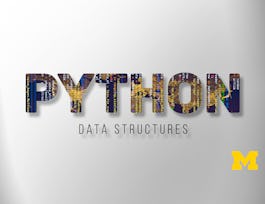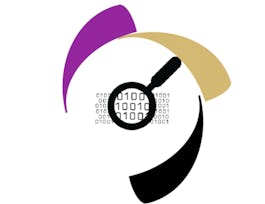This course will introduce students to the basics of the Structured Query Language (SQL) as well as basic database design for storing data as part of a multi-step data gathering, analysis, and processing effort. The course will use SQLite3 as its database. We will also build web crawlers and multi-step data gathering and visualization processes. We will use the D3.js library to do basic data visualization. This course will cover Chapters 14-15 of the book “Python for Everybody”. To succeed in this course, you should be familiar with the material covered in Chapters 1-13 of the textbook and the first three courses in this specialization. This course covers Python 3.


Using Databases with Python
This course is part of Python for Everybody Specialization
Taught in English
Some content may not be translated

Instructor: Charles Russell Severance
487,948 already enrolled
Included with 
Course
(21,200 reviews)
96%
What you'll learn
Use the Create, Read, Update, and Delete operations to manage databases
Explain the basics of Object Oriented Python
Understand how data is stored across multiple tables in a database
Utilize the Google Maps API to visualize data
Skills you'll gain
Details to know

Add to your LinkedIn profile
5 quizzes
Course
(21,200 reviews)
96%
See how employees at top companies are mastering in-demand skills

Build your subject-matter expertise
- Learn new concepts from industry experts
- Gain a foundational understanding of a subject or tool
- Develop job-relevant skills with hands-on projects
- Earn a shareable career certificate


Earn a career certificate
Add this credential to your LinkedIn profile, resume, or CV
Share it on social media and in your performance review

There are 5 modules in this course
To start this class out we cover the basics of Object Oriented Python. We won't be writing our own objects, but since many of the things we use like BeautifulSoup, strings, dictionaries, database connections all use Object Oriented (OO) patterns we should at least understand some of its patterns and terminology.
What's included
12 videos4 readings2 quizzes
We learn the four core CRUD operations (Create, Read, Update, and Delete) to manage data stored in a database.
What's included
6 videos1 quiz2 app items
In this section we learn about how data is stored across multiple tables in a database and how rows are linked (i.e., we establish relationships) in the database.
What's included
8 videos1 quiz1 app item
In this section we explore how to model situations like students enrolling in courses where each course has many students and each student is enrolled in many courses.
What's included
4 videos1 quiz1 app item
In this section, we put it all together, retrieve and process some data and then use the OpenStreetMaps API to visualize our data.
What's included
5 videos3 readings1 app item
Instructor

Offered by
Recommended if you're interested in Software Development

University of Michigan

University of Michigan

University of Michigan

University of Colorado System
Prepare for a degree
Taking this course by University of Michigan may provide you with a preview of the topics, materials and instructors in a related degree program which can help you decide if the topic or university is right for you.
Why people choose Coursera for their career




Learner reviews
Showing 3 of 21200
21,200 reviews
- 5 stars
82.28%
- 4 stars
14.22%
- 3 stars
2.29%
- 2 stars
0.46%
- 1 star
0.72%
New to Software Development? Start here.

Open new doors with Coursera Plus
Unlimited access to 7,000+ world-class courses, hands-on projects, and job-ready certificate programs - all included in your subscription
Advance your career with an online degree
Earn a degree from world-class universities - 100% online
Join over 3,400 global companies that choose Coursera for Business
Upskill your employees to excel in the digital economy
Frequently asked questions
Access to lectures and assignments depends on your type of enrollment. If you take a course in audit mode, you will be able to see most course materials for free. To access graded assignments and to earn a Certificate, you will need to purchase the Certificate experience, during or after your audit. If you don't see the audit option:
The course may not offer an audit option. You can try a Free Trial instead, or apply for Financial Aid.
The course may offer 'Full Course, No Certificate' instead. This option lets you see all course materials, submit required assessments, and get a final grade. This also means that you will not be able to purchase a Certificate experience.
When you enroll in the course, you get access to all of the courses in the Specialization, and you earn a certificate when you complete the work. Your electronic Certificate will be added to your Accomplishments page - from there, you can print your Certificate or add it to your LinkedIn profile. If you only want to read and view the course content, you can audit the course for free.
If you subscribed, you get a 7-day free trial during which you can cancel at no penalty. After that, we don’t give refunds, but you can cancel your subscription at any time. See our full refund policy.

